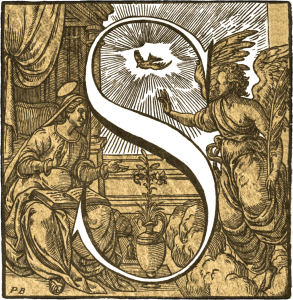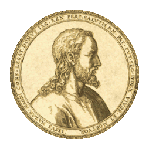

The Piety
by Michelangelo di Lodovico Buonarroti Simoni
PIETA by SCANTHEWORLD on SKETCHFAB
 AINT MARY holds the lifeless body of her son in “The Pietà” (in English: “The Piety”; 1498-1499), a brilliant work of Renaissance sculpture by Michelangelo Buonarroti, housed in St. Peter’s Basilica, Vatican City. It is the first of a number of works of the same theme by the artist. The statue was commissioned for the French Cardinal Jean de Bilhères, who was a representative in Rome. The sculpture, in Carrara marble, was made for the cardinal’s funeral monument, but was moved to its current location, the first chapel on the north side of the entrance of the basilica, in the 18th century. It is the only piece Michelangelo ever signed. It is also the only known sculpture created by a prominent name from the Renaissance era that was installed in St. Peter’s Basilica that was accepted by the Chapter of St. Peter.
AINT MARY holds the lifeless body of her son in “The Pietà” (in English: “The Piety”; 1498-1499), a brilliant work of Renaissance sculpture by Michelangelo Buonarroti, housed in St. Peter’s Basilica, Vatican City. It is the first of a number of works of the same theme by the artist. The statue was commissioned for the French Cardinal Jean de Bilhères, who was a representative in Rome. The sculpture, in Carrara marble, was made for the cardinal’s funeral monument, but was moved to its current location, the first chapel on the north side of the entrance of the basilica, in the 18th century. It is the only piece Michelangelo ever signed. It is also the only known sculpture created by a prominent name from the Renaissance era that was installed in St. Peter’s Basilica that was accepted by the Chapter of St. Peter.
This famous work of art depicts the body of Jesus on the lap of his mother Mary after the Crucifixion. Michelangelo’s interpretation of the Pietà is unprecedented in Italian sculpture. It is an important work as it balances the Renaissance ideals of classical beauty with naturalism.
In 2019, a small terracotta figure identified as a model for the final sculpture was displayed in Paris.
The structure is pyramidal, and the vertex coincides with Mary’s head. The statue widens progressively down the drapery of Mary’s dress, to the base, the rock of Golgotha. The figures are quite out of proportion, owing to the difficulty of depicting a fully-grown man cradled full-length in a woman’s lap. Much of Mary’s body is concealed by her monumental drapery, and the relationship of the figures appears quite natural. Michelangelo’s interpretation of the Pietà was far different from those previously created by other artists, as he sculpted a young and beautiful Mary rather than an older woman around 50 years of age.
The marks of the Crucifixion are limited to very small nail marks and an indication of the wound in Jesus’ side.
Christ’s face does not reveal signs of the Passion. Michelangelo did not want his version of the Pietà to represent death, but rather to show the “religious vision of abandonment and a serene face of the Son,” thus the representation of the communion between man and God by the sanctification through Christ. When Michelangelo set out to create his Pietà, he wanted to create a work he described as “the heart’s image”.
(Source: Wikipedia, Photography: Stanislav Traykov, Niabot)



